Workplace Safe Work Practices & Tips For Australian Businesses – Spire Safety
Workplace safety is an essential aspect of any business, regardless of its size or industry. Ensuring that employees are safe and healthy while at work not only protects them from harm but also reduces the risk of accidents that can lead to costly legal battles and reputational damage.
In Australia, businesses are required by law to implement safe work practices, which are designed to protect workers from hazards and risks associated with their jobs. The Workplace Health and Safety (WHS) laws in Australia outline the minimum requirements for workplace safety, including the provision of a safe working environment, consultation with workers on health and safety matters, training and education on hazards and risks, as well as adequate supervision to ensure compliance with WHS regulations.
This article will explore some tips for Australian businesses to maintain a safe workplace while complying with WHS obligations. From extreme weather conditions to asbestos exposure, we will cover everything you need to know about workplace safety in Australia.
What are safe work practices In Australia?
The implementation of standardized protocols for occupational health and safety is a crucial aspect of ensuring a secure and hazard-free working environment in Australia. Safe work practices in Australia are governed by the Work Health and Safety (WHS) laws, which require all businesses to implement measures that prioritize employee safety.
These measures include identifying potential hazards, evaluating risks associated with these hazards, implementing control measures to mitigate or eliminate these risks, providing training and instruction to employees on how to handle hazardous chemicals safely, and monitoring the effectiveness of implemented controls.
Codes of practice have been developed by Safe Work Australia as part of its commitment to promoting safe work practices across various industries in the country. These codes provide guidance on compliance with WHS laws, including advice on handling hazardous chemicals safely.
It is important for businesses in Australia to follow these codes as they serve as practical guides that can help them reduce workplace accidents and injuries while also improving productivity. Ultimately, adherence to safe work practices helps create a culture of safety within the workplace that fosters collaboration among employees towards achieving a common goal – a safer working environment for all.
WHS laws in Australia
A comprehensive understanding of the legal framework surrounding work health and safety (WHS) in Australia is crucial for businesses to ensure compliance and mitigate risks. The Work Health and Safety Act 2011, along with its regulations and codes of practice, outlines the duties and responsibilities of employers, workers, and other parties involved in workplace safety.
Some key provisions include:
- Duty of care: Employers must provide a safe working environment that eliminates or minimizes risks to health and safety as far as reasonably practicable.
- Consultation: Employers must consult with their workers on WHS matters such as hazard identification, risk assessment, and control measures.
- Incident reporting: Employers are required to report certain incidents such as serious injuries or dangerous occurrences to the relevant authorities.
In addition to these provisions, WHS laws also empower regulators to monitor compliance through inspections, investigations, and enforcement action where necessary.
Businesses should therefore prioritize adopting safe work practices by implementing effective WHS management systems that align with the legal requirements in Australia.

Overall, an awareness of WHS laws is essential for businesses seeking to maintain a safe workplace environment for their employees while avoiding potential legal liabilities associated with non-compliance. By adhering to these regulations through informed policies and procedures that promote safe work practices at all levels of the organization, companies can create a culture that prioritizes workplace safety while enhancing productivity and profitability over time.
Benefits of safe work practices
Adopting effective measures to ensure workplace safety and implementing safe work practices can yield significant benefits for Australian businesses.
One of the most notable benefits is improved morale among employees, who feel valued and respected by their employers. When workers feel that their health and wellbeing are a priority for the company they work for, they tend to be more engaged in their tasks, more loyal to the organization, and more likely to recommend it as an employer of choice.
Moreover, safe work practices can also lead to reduced absenteeism. When employees know that they are working in a safe environment where risks are minimized, they are less likely to call in sick or take time off due to workplace injuries or illnesses. This results in better productivity levels and fewer disruptions caused by staff shortages.
Additionally, investing in workplace safety can decrease costs associated with accidents or incidents at work. By preventing injuries or illnesses from occurring through preventative measures such as training programs or hazard assessments, companies can avoid expenses related to medical treatment, insurance claims, legal fees and compensation payouts.
WHS obligations for businesses
Complying with Work Health and Safety (WHS) obligations is a crucial aspect of ensuring the wellbeing of employees and minimizing risks in the workplace. As defined by Safe Work Australia, work environment refers to ‘all aspects of work, including physical, biological, chemical, psychological and social factors.’ This means that businesses should prioritize providing a safe and healthy work environment for their workers.
To achieve this goal, businesses can follow these guidelines:
- Implementing relevant codes of practice: Safe Work Australia has developed various codes of practice that provide guidance on how to comply with WHS obligations.
- Understanding WHS Act requirements: The WHS Act outlines the legal requirements for businesses to ensure health and safety in their workplaces. It is important for businesses to understand these requirements so they can implement appropriate measures.
- Providing training and education: Workers need adequate training and education on WHS practices to be able to identify hazards and prevent accidents.
- Ensuring workers compensation: Businesses must have adequate insurance coverage for worker’s compensation claims in case an employee suffers from a workplace injury or illness.
By following these guidelines, Australian businesses can create safer work environments, reduce risks associated with workplace injuries or illnesses, and ultimately improve the wellbeing of their employees.
WHS obligations for workers
The importance of workers fulfilling their WHS obligations cannot be overstated, as neglecting these responsibilities not only endangers themselves but also jeopardizes the wellbeing of their colleagues and undermines the trust and integrity of the organization.
Workers have a legal obligation to comply with all WHS requirements set by the Australian government. This includes identifying and reporting hazards, participating in safety training and drills, using personal protective equipment (PPE), and following safe work practices.
Workers must also be aware of psychosocial hazards such as stress, bullying, harassment, and discrimination that can have negative effects on their mental health. In addition to physical hazards like asbestos or chemicals, psychosocial hazards are often overlooked but can significantly impact workers’ overall wellbeing.
Therefore, it is crucial for workers to report any incidents or concerns related to occupational safety immediately. By prioritizing WHS obligations both legally and ethically, businesses can ensure a safe work environment where employees feel valued and protected from harm.
Managing health and safety at work
Ensuring the effective management of health and safety in the workplace is a critical aspect of fostering a culture that prioritizes employee wellbeing and mitigates potential risks. In Australia, businesses have a legal obligation to provide a safe work environment for their employees.
This involves:
- identifying potential hazards
- assessing risks
- implementing controls
- regularly monitoring and reviewing safety procedures
It also requires employers to provide appropriate training and supervision to ensure that workers are aware of safe work practices and understand their role in maintaining workplace safety.
Managing health and safety at work involves not only complying with legal requirements but also creating a positive safety culture within the organization. This can be achieved by:
- involving employees in hazard identification processes
- encouraging them to report incidents or near misses
- providing feedback on performance related to safe work practices
- recognizing good safety behaviour
By prioritizing workplace safety through effective management practices, Australian businesses can create a safer working environment for their employees while also minimizing the risk of accidents or injuries that may result in financial costs or damage to reputation.
Spire Safety provides support in managing workplace health and safety through tailored solutions designed to meet individual business needs.
Hazards in the workplace
Effective management of work health and safety practices is essential for any organisation to ensure a safe work environment. However, workplaces are not immune to hazards that can pose risks to the health and safety of employees. It is crucial to identify these hazards and take measures to eliminate or control them as much as possible.
Hazards in the workplace can be categorised into physical, chemical, biological, ergonomic, and psychosocial hazards. Physical hazards include slips, trips, falls, and collisions with objects or vehicles. Chemical hazards can come from exposure to toxic substances such as gases and liquids.
Biological hazards refer to exposure to viruses or bacteria that can cause infectious diseases.
Ergonomic hazards are associated with poor posture or repetitive movements that cause musculoskeletal disorders such as back pain or tendonitis. Psychosocial hazards result from factors such as bullying, harassment, and violence in the workplace which may lead to mental distress among employees.
Regulating these potential issues is important for creating a safe work environment by implementing appropriate measures like providing personal protective equipment (PPE) and training employees on how best they could protect themselves against the identified risks.
Data and research on WHS
Research on work health and safety provides valuable insights into identifying potential hazards, implementing preventive measures, and promoting a culture of safety in the workplace. By analyzing data and conducting research, businesses can gain a better understanding of the risks involved in their operations and take appropriate actions to mitigate them.
Here are some ways that data and research can benefit workplace safety:
- Identification of common hazards: Research can help identify common types of hazards that occur in specific industries or workplaces. This information can be used to develop targeted interventions to prevent accidents.
- Evaluation of effectiveness: Data analysis allows businesses to evaluate the effectiveness of their current safety practices and make adjustments as needed.
- Development of best practices: By studying successful safety initiatives implemented by other organizations, businesses can develop best practices for their own operations.
- Promotion of a culture of safety: Research has shown that a positive safety culture is essential for reducing accidents in the workplace. Data analysis can help companies assess the current state of their organizational culture and implement strategies to promote safe work practices among employees.
Incorporating data-driven approaches to workplace safety is critical for Australian businesses looking to ensure the well-being of their employees while also improving productivity and profitability. By utilizing research findings to identify potential hazards, implement preventive measures, and foster a positive safety culture, businesses can create safer working environments that benefit everyone involved.
Workers’ Compensation in Australia
As we have learned in the previous subtopic, data and research, play a crucial role in ensuring work health and safety (WHS) in Australian businesses.
However, even with proper WHS measures in place, accidents may still happen, leading to injuries or illnesses among workers.
That is where workers’ compensation comes into play.
Workers’ compensation is an insurance scheme that provides benefits to employees who suffer work-related injuries or illnesses.
In Australia, it is a mandatory requirement for most employers to have workers’ compensation insurance coverage for their employees.
This ensures that workers are protected from financial hardships brought about by workplace accidents while also promoting workplace safety, as it puts pressure on employers to implement safe work practices.
Resources and publications on WHS
This section provides a comprehensive overview of the resources and publications available for work health and safety (WHS) in Australia. With workplace safety being a top priority, businesses need to have access to evidence-based practices that address the complex nature of workplace hazards.
The Australian government has established various WHS regulatory bodies that provide guidelines, resources, and tools for businesses to establish safe work practices. Businesses can access an array of resources from Safe Work Australia, which is responsible for developing national policy on WHS matters. The website contains information on codes of practice, legislation, industry-specific guidance materials, statistics and research reports.
Other notable resources include WorkSafe Victoria’s Health and Safety Handbook, which outlines practical steps businesses can take to manage hazards in their workplaces.
These resources are essential in helping Australian businesses create a safe working environment while complying with legal requirements relating to WHS.
5 Safe Work Practices For The Workplace
Safe work practices are essential in any workplace to ensure the safety and well-being of employees. Establishing clear safety guidelines that outline specific procedures for handling hazardous materials or operating machinery is crucial.
Providing appropriate training to employees on safe work practices, utilizing personal protective equipment, implementing hazard identification and risk assessment strategies, and developing emergency response plans are all critical components of maintaining a safe workplace environment.
By following these key points, businesses can promote a culture of safety and reduce the likelihood of accidents or injuries.
Establish Clear Safety Guidelines
Establishing unambiguous safety protocols is a crucial step toward promoting a secure work environment. Clear guidelines help to reduce the occurrence of accidents and minimize injuries in the workplace. By providing workers with specific instructions on how to perform their tasks safely, employers can prevent hazards and ensure that all employees are aware of the potential risks associated with their duties.
To establish clear safety guidelines, Australian businesses should consider incorporating the following measures:
- Conduct a thorough risk assessment: Employers should assess their workplaces for potential hazards and identify areas where improvements can be made to promote safety.
- Develop written policies: Written policies can help communicate expectations and procedures to employees in an easy-to-understand format.
- Provide training: Training sessions can educate employees on safe work practices and prepare them for emergency situations.
- Regularly review guidelines: Employers should periodically review their safety guidelines to ensure they remain up-to-date with any changes in regulations or best practices.
By implementing these measures, Australian businesses can create a safer work environment for all employees while reducing the risk of accidents and injuries occurring in the workplace.
Spire Safety recommends that employers take these steps seriously as it’s critical for maintaining workplace safety standards.
Provide Appropriate Training
In order to promote a secure work environment, it is essential for employers to provide appropriate training that educates employees on safe and effective ways to perform their tasks while preparing them for emergency situations. This includes induction training for new hires, ongoing refresher courses, and specialized training for high-risk industries such as construction or mining.
By providing comprehensive training programs, employers can ensure that their employees are equipped with the necessary knowledge and skills to identify potential hazards in the workplace and take appropriate measures to prevent accidents.
Training should cover a range of topics related to workplace safety such as fire safety procedures, first aid techniques, manual handling practices, personal protective equipment (PPE) usage, hazard identification and reporting, and emergency response protocols.

It is also important for employers to regularly review and update their training programs in order to keep up with changing regulations or industry standards.
By prioritizing employee safety through effective training programs, Australian businesses can create a culture of safe work practices that not only protects workers but also improves productivity and reduces costs associated with workplace injuries or accidents.
Spire Safety offers customized workplace safety solutions designed specifically for Australian businesses seeking to improve their overall safety performance.
Utilize Personal Protective Equipment
The utilization of personal protective equipment should be prioritized as a crucial aspect of ensuring the safety and wellbeing of employees in various industries. Personal protective equipment (PPE) is designed to protect workers from potential hazards that may cause injury or illness in the workplace. It includes items such as safety helmets, gloves, eye protection, high-visibility clothing, respiratory protection, and safety footwear.
In Australia, businesses are required by law to provide their workers with safe work practices and PPEs suitable for their job tasks. By doing so, employers can reduce the risk of accidents happening in the workplace while also protecting their employees’ health and wellbeing.
Additionally, providing PPEs to workers promotes a culture of safety within an organization and shows that management values their staff’s welfare. Therefore, it is essential for Australian businesses to prioritize the use of PPEs as part of their overall workplace safety measures to prevent injuries and illnesses at work.
Implement Hazard Identification and Risk Assessment
To ensure workplace safety and prevent accidents, Australian businesses must implement safe work practices that minimize risks in the workplace. One of the most important steps towards achieving this is through hazard identification and risk assessment.
This involves identifying potential hazards in the workplace, evaluating their likelihood of occurrence, and assessing their impact on employees’ health and safety. By implementing hazard identification and risk assessment processes, businesses can proactively identify potential hazards before they cause harm to employees.
This approach enables companies to develop controls that eliminate or reduce risks to a level that is acceptable for their workers. Such measures may include modifying work processes or equipment design, providing protective gear, or introducing emergency response procedures.
Overall, effective hazard identification and risk assessment helps businesses maintain a safe working environment while minimizing costs associated with injuries or illnesses resulting from occupational hazards.
Develop Emergency Response Plans
Developing emergency response plans is a critical component of ensuring the preparedness of organizations to handle unexpected events or crises that may arise in the workplace. A well-prepared emergency response plan can help mitigate the impact of various hazards, including natural disasters, fires, and accidents. It should also consider the specific needs and characteristics of the workplace, such as hazardous materials on-site or vulnerable populations.
In developing an emergency response plan, it is crucial to involve all relevant stakeholders in identifying potential hazards, determining appropriate responses, and assigning responsibilities. The plan should include clear protocols for communication during emergencies and regular training sessions for employees to ensure they know what to do in case of an emergency.
Australian businesses can benefit from partnering with safety consultants such as Spire Safety who specialize in developing customized workplace safety plans that address specific organizational risks and provide practical solutions for achieving a safe work environment.
Model Codes of Practice for WHS
The Model Codes of Practice for WHS provide Australian businesses with a comprehensive guide to establishing and maintaining safe work practices in the workplace. These codes are developed by Safe Work Australia, an agency established by the Australian government to promote safety and health at work. They serve as a valuable resource for organizations seeking to establish effective workplace health and safety measures.
Here are some key points about the Model Codes of Practice for WHS that Australian businesses should keep in mind:
- The codes provide practical guidance on how to meet legal obligations under the Work Health and Safety (WHS) Act.
- They cover a wide range of topics including hazard identification, risk assessment, training, emergency management, and first aid.
- Compliance with these codes is not mandatory but it can be used as evidence of good practice if legal action is taken against a business.
- Businesses can use these codes as a starting point to develop their own policies and procedures tailored to their specific industry or workplace.
By following these guidelines provided by the Model Codes of Practice for WHS, Australian businesses can create safer working environments for their employees while also complying with legal requirements.
Emergency plans and first aid
This section focuses on the importance of emergency plans and first aid in creating a safe and prepared working environment. Workplace safety is crucial for Australian businesses to ensure that their employees are protected from harm or injury.
Emergency plans are an essential part of workplace safety practices as they provide guidelines and procedures to follow during unexpected situations such as natural disasters, fires, or medical emergencies. Emergency plans must be tailored according to the specific needs of each business and location. These plans should include evacuation procedures, communication methods, emergency contacts, assembly points, and designated roles for personnel during emergencies.
Additionally, it is vital for businesses to have trained first aid responders who can provide immediate assistance in case of injuries or illnesses at work. First aid training equips employees with the necessary skills to handle emergency situations until professional help arrives.
By implementing these safe work practices, Australian businesses can create a secure working environment that prioritizes employee well-being and ensures productivity continuity even during unforeseen circumstances.

Overall, emergency plans and first aid are crucial components of workplace safety that cannot be ignored by any business seeking to protect its employees from potential hazards at work. By investing in these critical areas of workplace safety practices, Australian businesses can prevent accidents from occurring while ensuring their workers’ well-being at all times.
Work in extreme weather conditions
Working in extreme weather conditions requires employees to be aware of potential dangers and take necessary precautions to ensure their safety and well-being.
Employees who work outdoors are at risk of heat exhaustion, dehydration, sunburn, and hypothermia when working in extreme weather conditions. It is important for employers to implement workplace safe work practices that protect employees from these hazards.
One tip for Australian businesses is to provide adequate training for employees on how to recognize the signs of heat exhaustion or hypothermia. Employers can also provide protective clothing such as hats, sunscreen, and cold-weather gear to keep employees comfortable while working in extreme weather conditions.
Additionally, it is important for employers to establish clear guidelines on when it is appropriate for employees to work outside in extreme weather conditions. By implementing these tips and workplace safe work practices, Australian businesses can help prevent injuries related to working in extreme weather conditions and promote a culture of safety within their organization.
Spire Safety offers resources and support for businesses looking to improve their workplace safety practices. Overall, by prioritizing employee safety when it comes to working in extreme weather conditions, Australian businesses can create a safer work environment that benefits both their workers and the business as a whole.
Accommodation and WHS
Accommodation and WHS are two essential elements that require careful consideration to ensure the safety and well-being of employees in various work environments. Employers have a responsibility to provide adequate accommodation facilities for their staff when required, particularly if they work in remote locations or hazardous environments. Such accommodations must be designed with workplace safety in mind, keeping the following factors into consideration:
- The location and accessibility of the accommodation.
- The design of the facility and its compliance with model WHS laws.
- The quality of hygiene, ventilation, lighting, heating, and cooling systems.
- Emergency responses that can be implemented during natural disasters or other emergencies.
Furthermore, employers should have policies in place that outline how employees should conduct themselves while using these facilities. Employees must also comply with these policies to maintain a safe working environment.
Accommodations should be inspected regularly to ensure they meet all relevant standards.
In conclusion, accommodation is an integral part of workplace safety practices. Employers must provide safe and suitable accommodations for their staff as part of their duty to provide a safe workplace under model WHS laws.
Properly designed accommodations can enhance employee well-being by providing them with a comfortable space where they can rest after work or between shifts. As such, it is necessary for businesses to prioritize this aspect of workplace safety for optimal productivity and employee satisfaction.
Mining and WHS
In order to maintain a safe and healthy workplace, businesses in Australia must adhere to strict health and safety practices. This is especially important for industries like mining, which can pose unique hazards that require specific measures to mitigate risks.
Mining companies are required by law to have comprehensive WHS plans in place, and employees must undergo regular training on safe work practices. Mining operations involve a range of activities that can be hazardous if proper precautions are not taken. Workers may be exposed to dangerous chemicals or substances, operate heavy machinery or equipment, work at heights or in confined spaces, and face the risk of explosions or collapse.
To ensure the safety of workers in these environments, mining companies must implement a range of measures such as regular equipment inspections, ongoing hazard identification assessments, the provision of personal protective equipment (PPE), and emergency response plans. By following best practice guidelines for workplace safety in mining operations, Australian businesses can protect their workers from harm while also maintaining productivity and profitability.
Asbestos in the workplace
The presence of asbestos in various industries continues to pose potential health risks for workers and underscores the importance of effective risk management strategies. Asbestos is a naturally occurring mineral that was widely used in construction, manufacturing, and other industries until the 1980s. It has since been proven to cause serious lung diseases such as mesothelioma, asbestosis, and lung cancer.
Therefore, it is crucial for businesses to implement safe work practices for handling asbestos. To mitigate the risks associated with asbestos exposure, companies must adhere to legislative requirements for electrical safe work practice and follow workplace safety best practices.
This includes conducting regular risk assessments to identify where asbestos may be present on worksites and implementing appropriate control measures such as using personal protective equipment (PPE) or hiring licensed removal contractors. Additionally, staff should receive proper training on how to handle hazardous materials safely and be familiar with the company’s asbestos-safe work procedure.
These steps are especially important in industries such as aged care, where workers may encounter asbestos-containing materials during routine maintenance or renovation activities. By taking these precautions seriously, businesses can minimize the potential health hazards posed by asbestos exposure and ensure a safe working environment for all employees.
Frequently Asked Questions
What are the most common workplace injuries in Australia?
Workplace injuries in Australia are, unfortunately, all too common. According to Safe Work Australia, the most common types of workplace injuries include:
- Musculoskeletal disorders (such as back pain and repetitive strain injuries)
- Traumatic joint/ligament and muscle/tendon injuries
- Wounds and lacerations
- Mental health-related conditions
These injuries can be caused by a variety of factors, including poor ergonomics, hazardous manual tasks, slips/trips/falls, exposure to harmful substances or environments, and stress.
It is essential for employers to implement appropriate safety measures and provide adequate training to prevent these injuries from occurring in their workplaces. By doing so, they not only protect their employees but also ensure compliance with legal obligations under Australian occupational health and safety laws.
How often should workplace safety training be conducted?
Workplace safety training is an essential component of any successful organization, as it helps prevent injuries and accidents in the workplace. The frequency with which this training should be conducted varies depending on several factors, including the size of the company, the nature of work being performed, and any changes to laws or regulations that may impact workplace safety.
Generally speaking, most experts recommend conducting workplace safety training at least once per year to ensure that employees are up-to-date on best practices for maintaining a safe work environment. However, some industries or workplaces may require more frequent training sessions to address specific risks or hazards associated with their line of work.
Ultimately, it is up to each individual business owner or manager to determine how often they should provide workplace safety training based on these factors and others unique to their organization.
Are there any specific WHS regulations for office-based businesses?
There are specific Work Health and Safety (WHS) regulations that apply to office-based businesses in Australia. These regulations include requirements for maintaining a safe work environment, ensuring the safety of equipment and machinery, providing adequate training and supervision for employees, and conducting regular risk assessments.
Office-based businesses must also comply with WHS legislation regarding emergency procedures, first aid provisions, and reporting workplace incidents or injuries.
It is important for office managers to familiarize themselves with these regulations and implement appropriate measures to ensure compliance and protect the health and safety of their employees.
What should employers do if an employee refuses to follow safety protocols?
When an employee refuses to follow safety protocols, it is the employer’s responsibility to address the situation promptly. Employers should first investigate the reasons behind the refusal and determine if any reasonable accommodations can be made without compromising safety.
If accommodations cannot be made, employers may need to take disciplinary action, including termination in extreme cases. It is important for employers to communicate clearly with their employees about the importance of following safety protocols and ensure that all employees are trained adequately in safe work practices.
By taking proactive measures to enforce safety policies, employers can create a culture of safety in their workplace and reduce the risk of accidents or injuries occurring.
How can businesses effectively monitor and identify workplace hazards?
Monitoring and identifying workplace hazards is an essential aspect of ensuring a safe working environment. Businesses must have effective hazard identification and risk assessment processes to minimize the risk of accidents, injuries, and illnesses in the workplace.
Such practices involve regular inspections, assessments, and audits to identify potential hazards such as faulty equipment or unsafe work practices. By regularly monitoring these risks, businesses can take immediate action to prevent incidents from happening and protect their employees from harm.
The implementation of a robust hazard identification system not only ensures compliance with safety regulations but also demonstrates a commitment to creating a safe working environment for all employees.
Conclusion
Safe work practices are critical for the protection of employees and businesses in Australia. Under WHS laws, both employers and workers have obligations to ensure a safe working environment. Employers must provide a safe workplace, while workers must follow guidelines to maintain their own safety and that of their colleagues.
Extreme weather conditions can pose additional risks, and appropriate measures should be taken to mitigate these hazards. Accommodation facilities must also adhere to strict WHS regulations to ensure the safety of their guests. Additionally, mining operations require special attention due to the inherent dangers involved in such activities. Asbestos exposure is another significant concern in Australian workplaces, and proper protocols must be followed to prevent its harmful effects.
Compliance with safe work practices not only protects workers from injury or illness but also enhances productivity and reduces costs associated with accidents or legal claims. Employers who prioritize safety demonstrate a commitment to their workforce’s well-being, which fosters employee loyalty and increases job satisfaction. Furthermore, adherence to WHS regulations helps organizations avoid legal penalties or reputational damage resulting from unsafe work practices.
In conclusion, implementing safe work practices is essential for maintaining a healthy workplace culture while complying with legal obligations in Australia. Both employers and workers have roles to play in ensuring everyone’s safety on site or at any location where business operations occur.
By prioritizing safety through appropriate measures like training programs or hazard assessments before undertaking tasks that may pose potential risks like extreme weather conditions or asbestos exposure prevention plans will help protect all stakeholders involved in an organization’s success while avoiding costly litigation fees down the line if any accidents occur due to negligence towards WHS guidelines.









